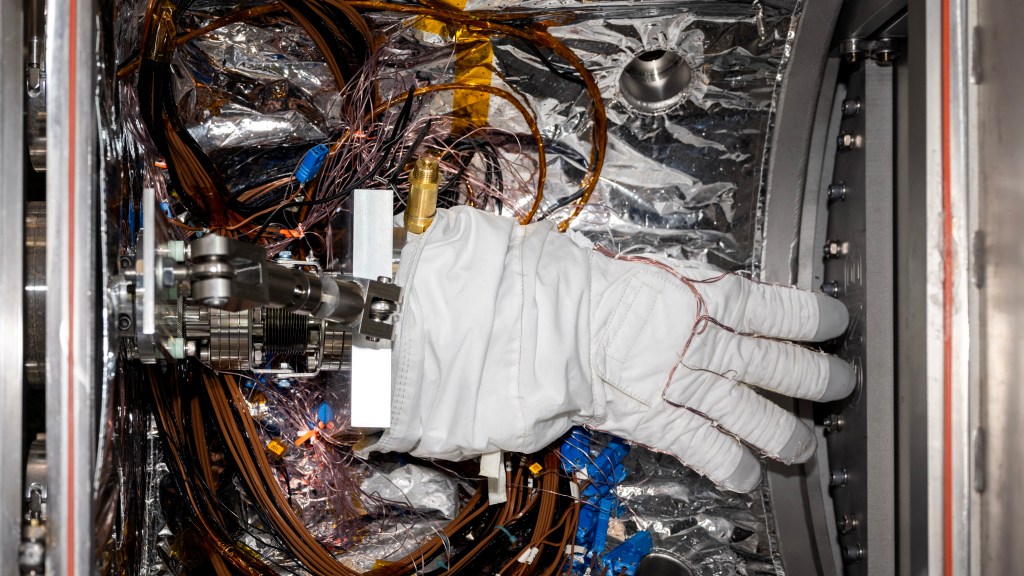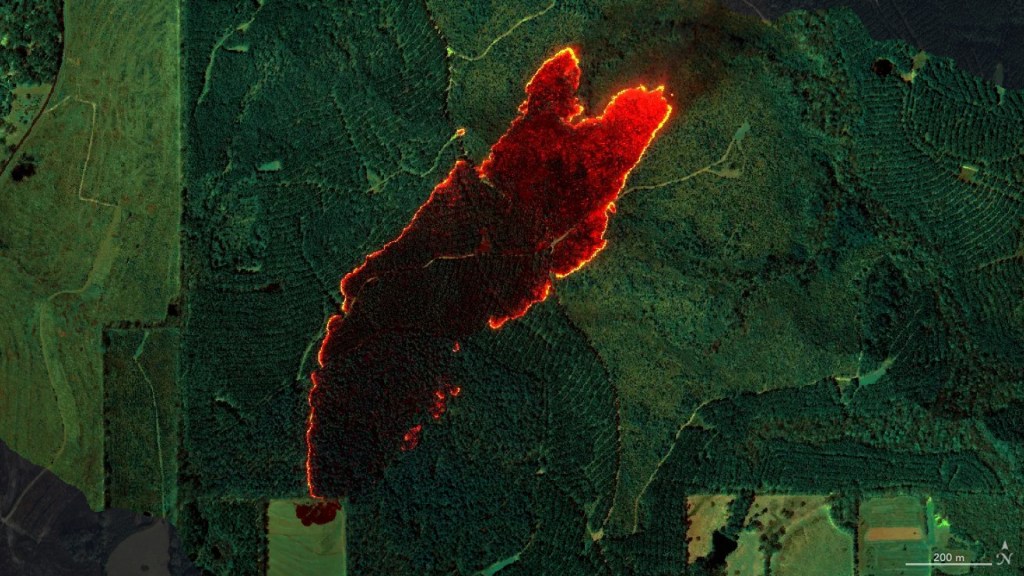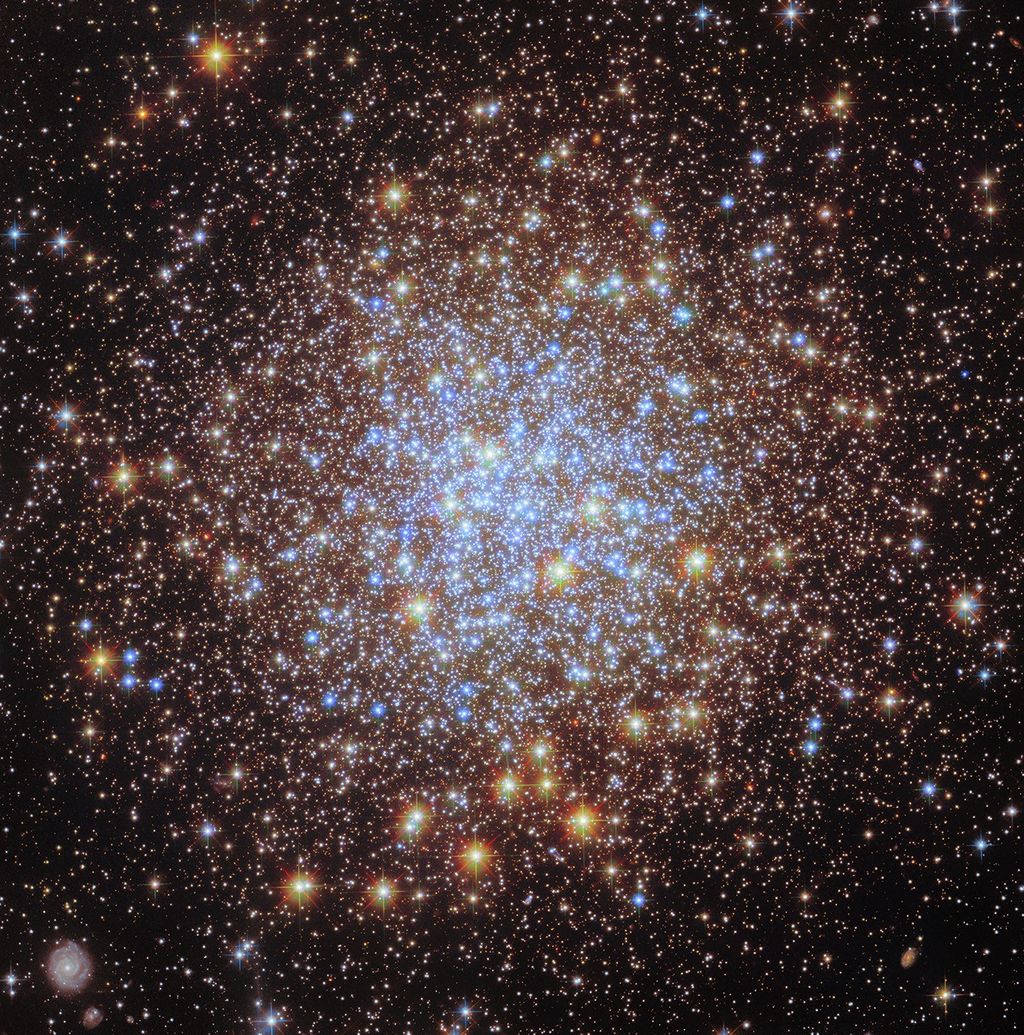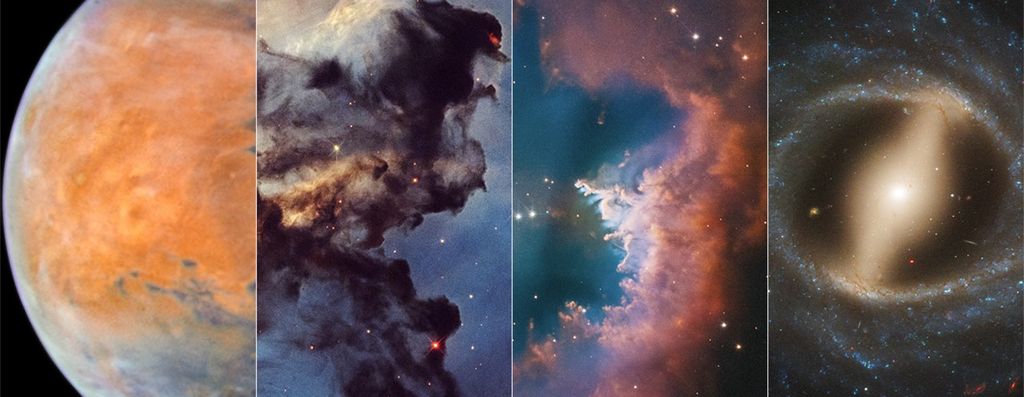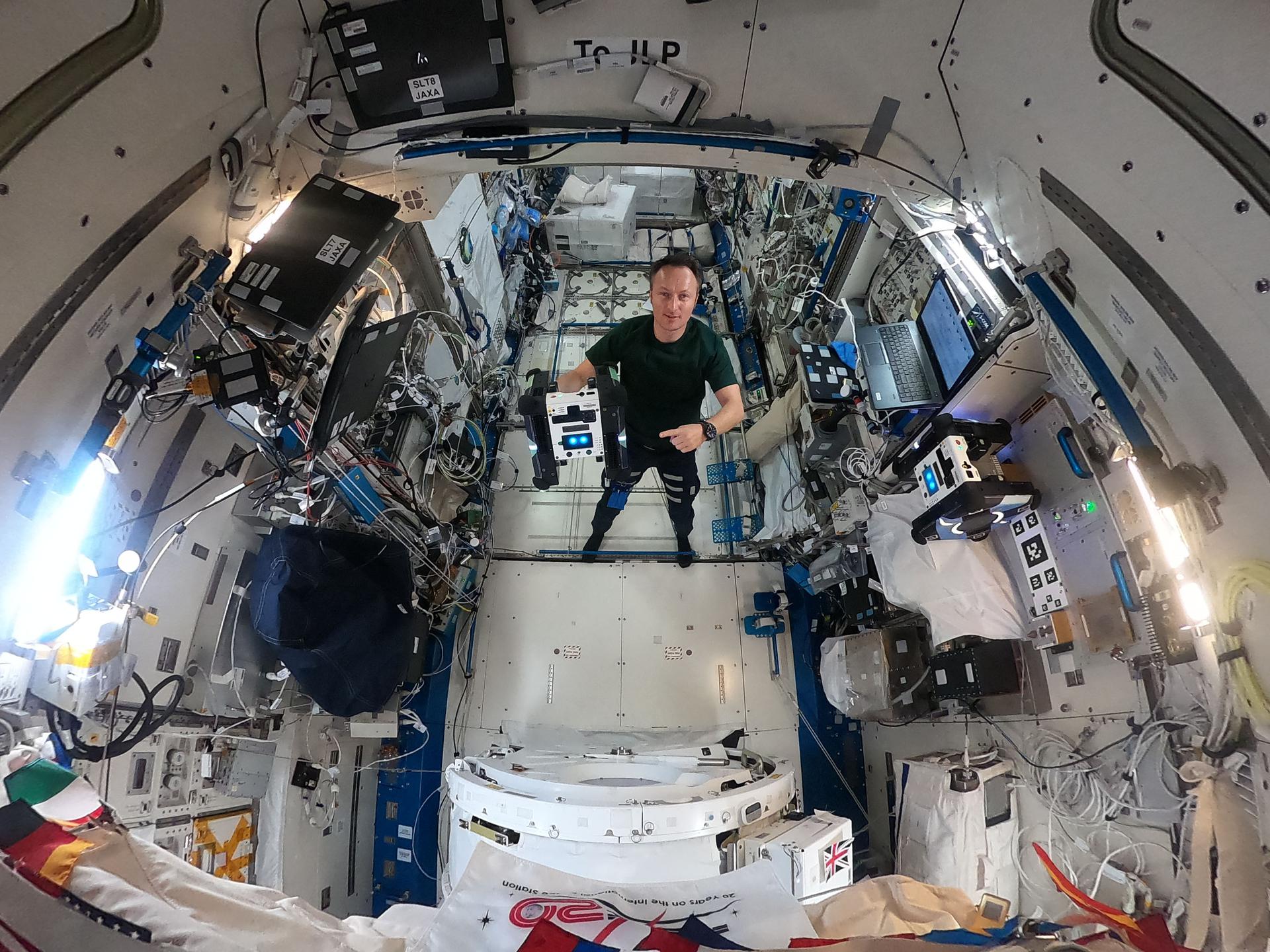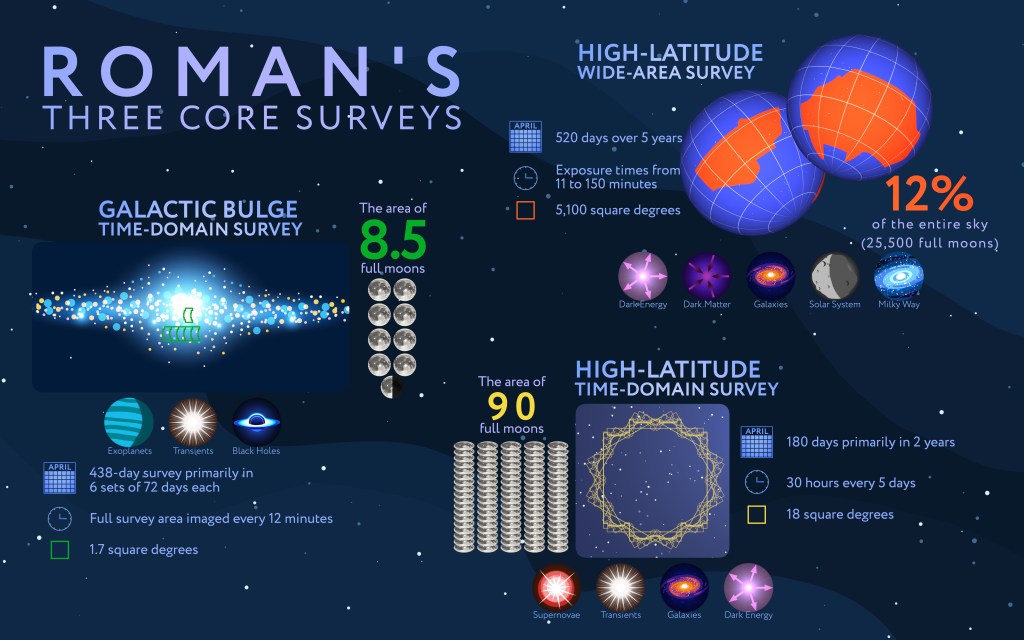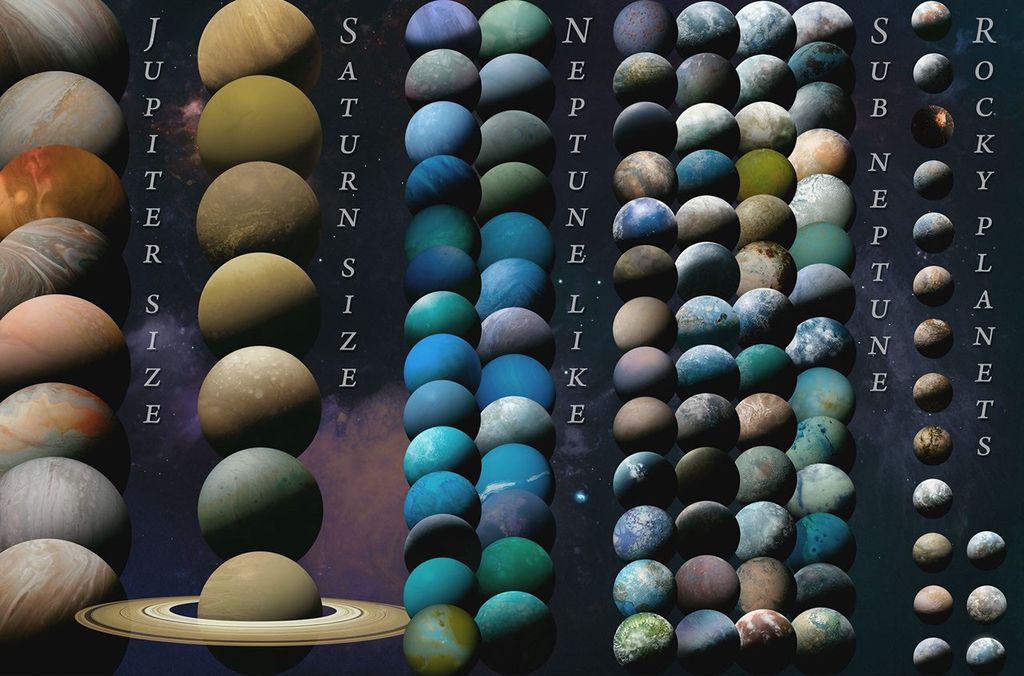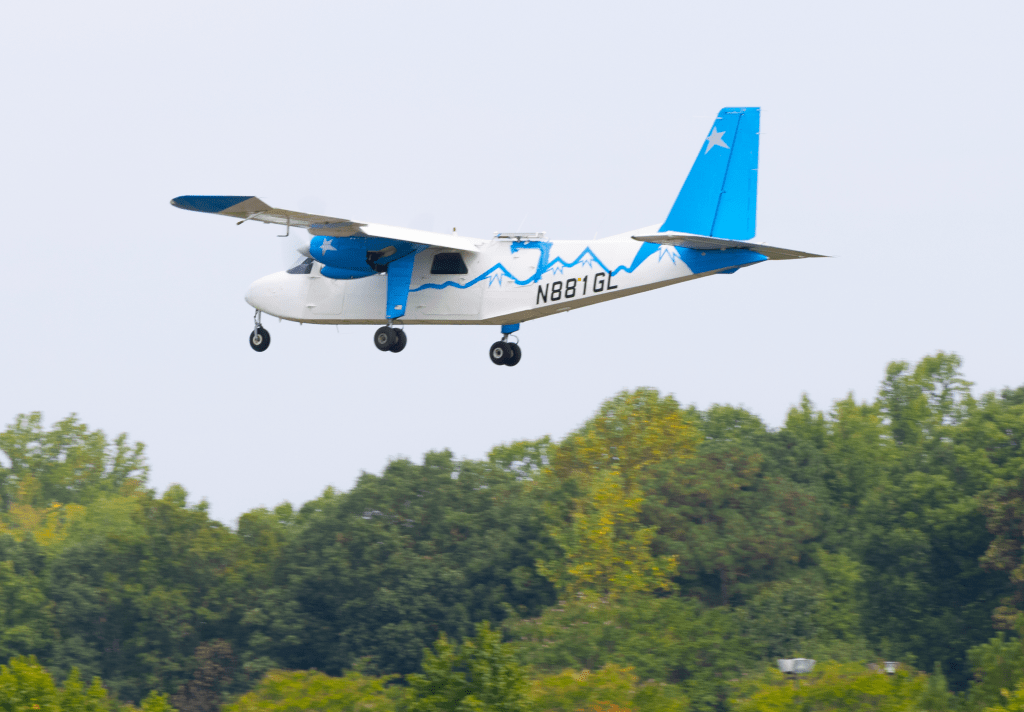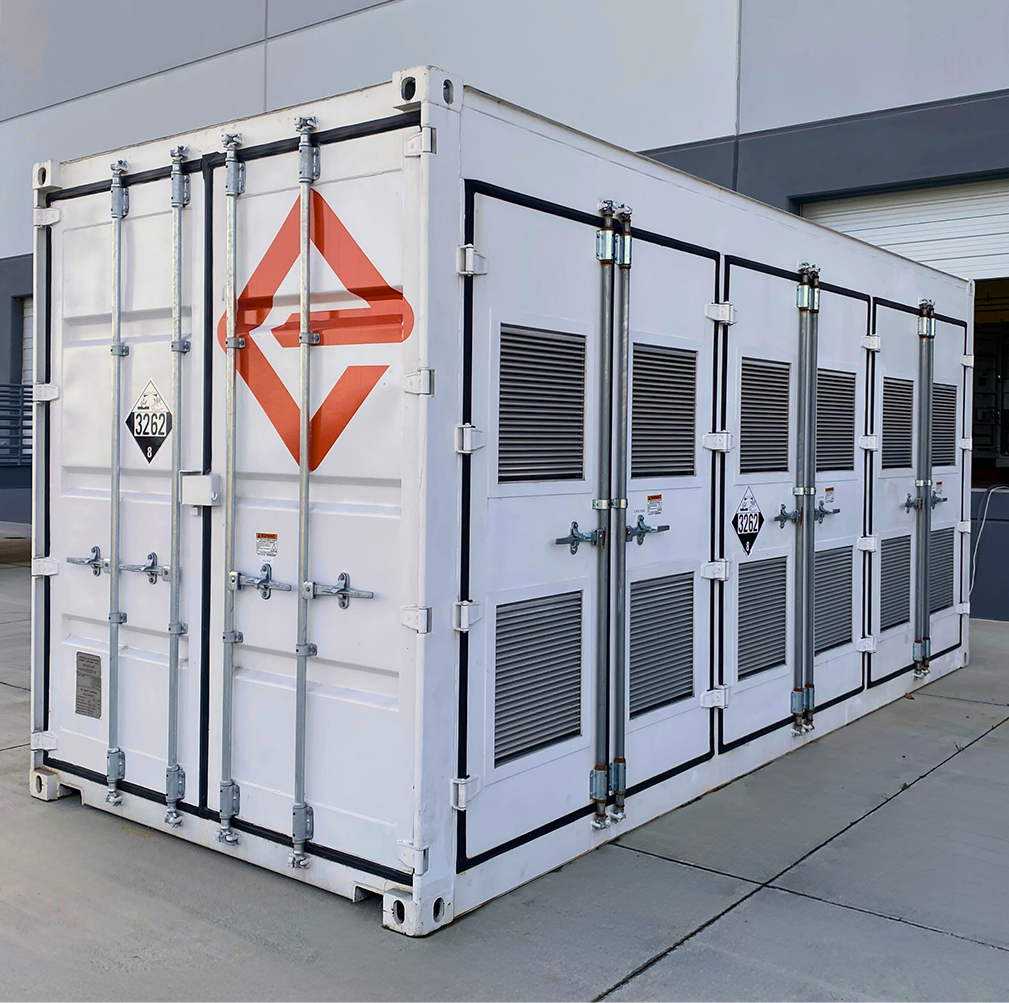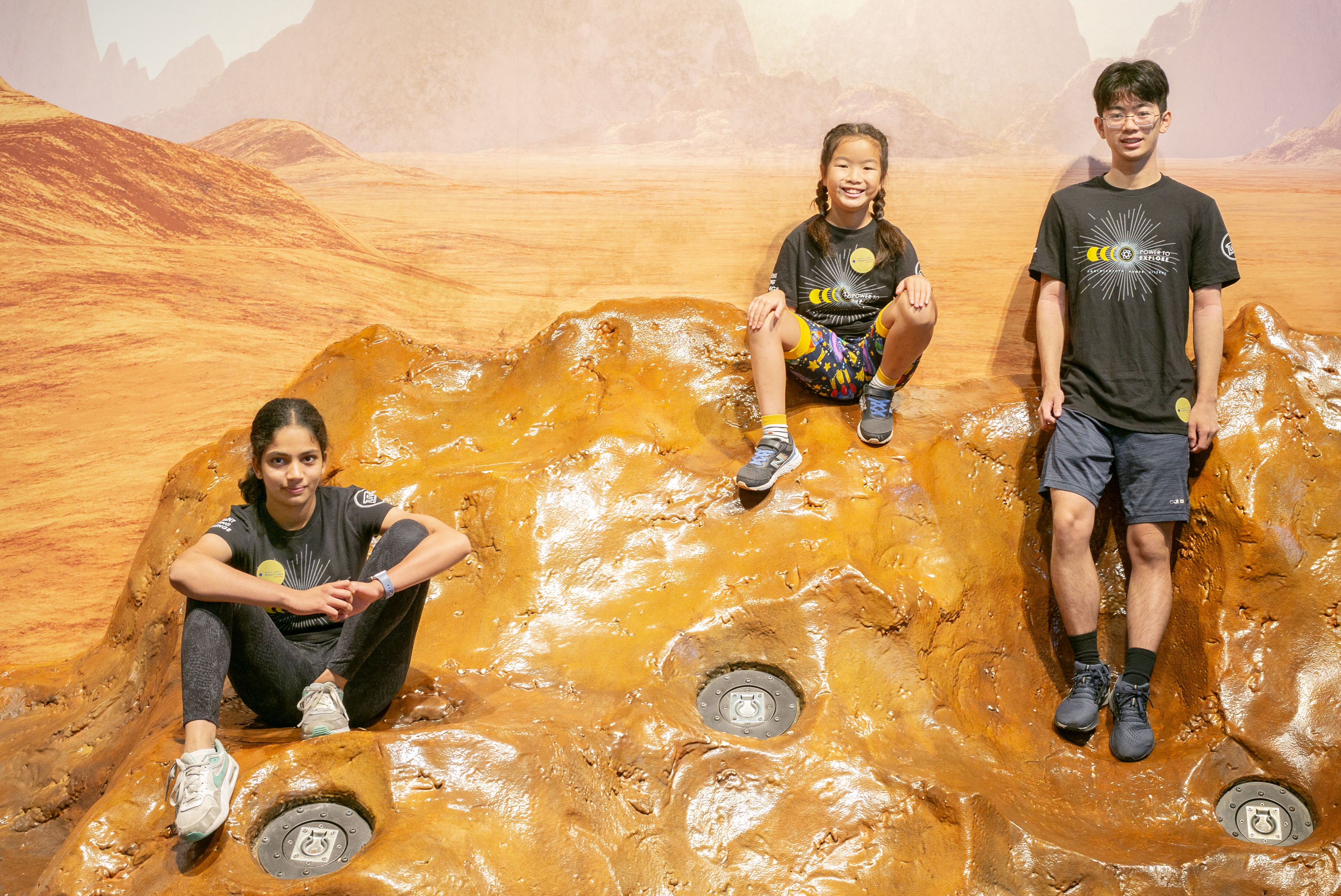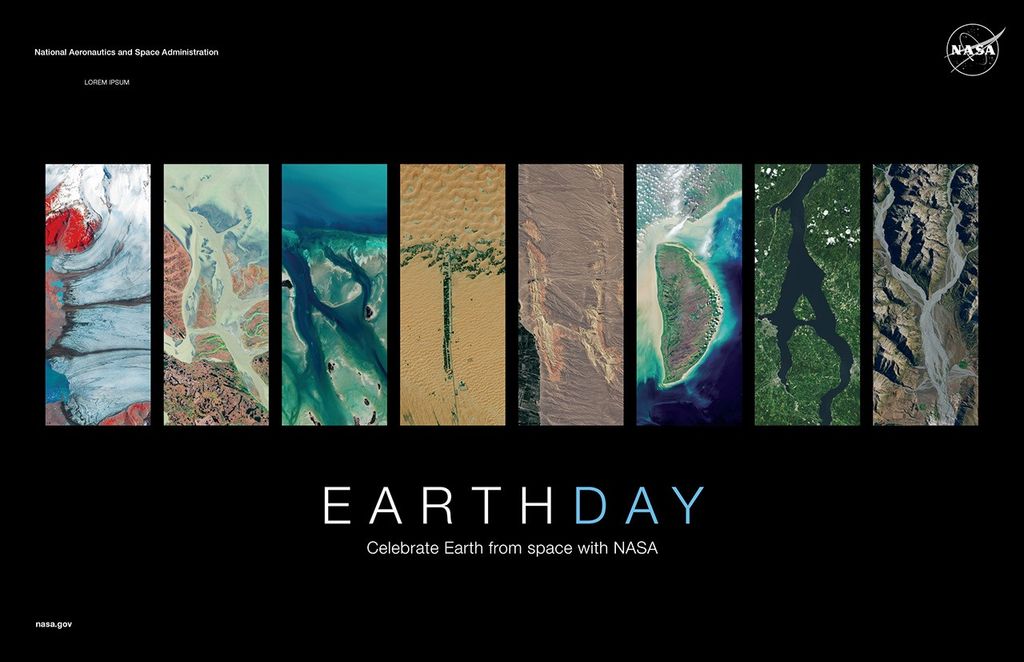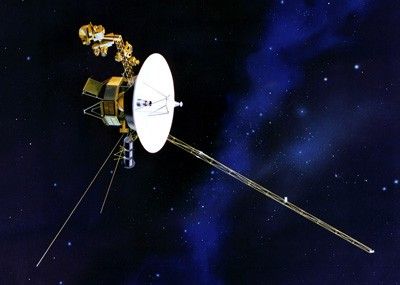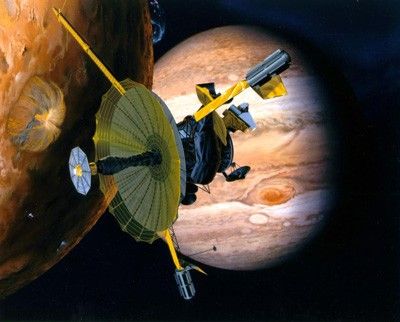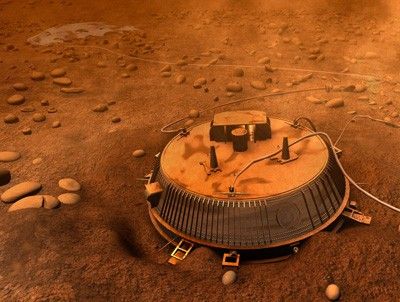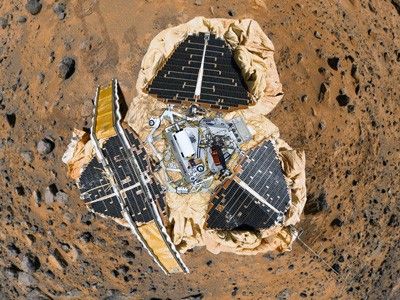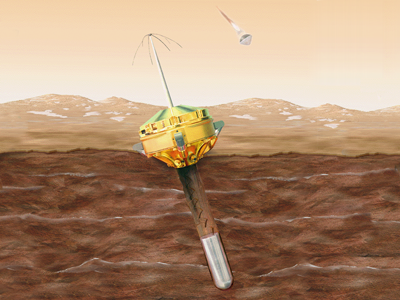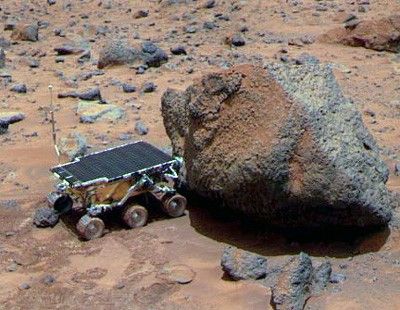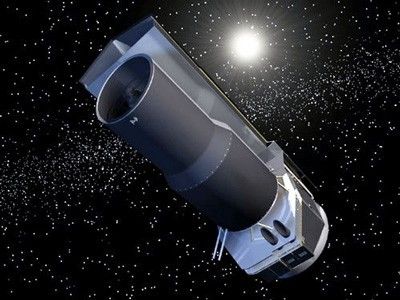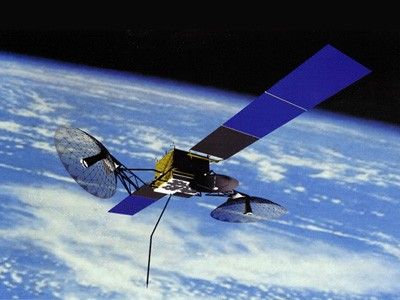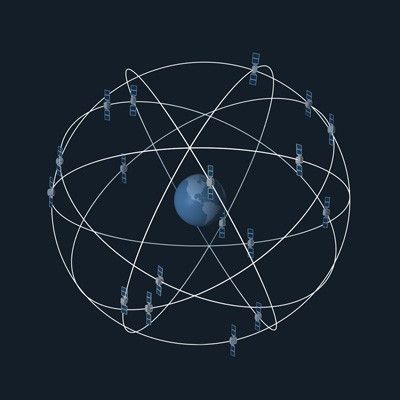Chapter 9: Spacecraft Classification
Chapter Objectives
Upon completion of this chapter you will be able to state the characteristics of various types of robotic spacecraft and be able to identify any of JPL's past, current, or future spacecraft as belonging to one of eight basic categories.
Types of Spacecraft
Robotic spacecraft are specially designed and constructed systems that can function in specific hostile environments. Their complexity and capabilities vary greatly and their purposes are diverse. To make some sense of all these variables, this chapter arbitrarily designates eight broad classes of robotic spacecraft according to the missions the spacecraft are intended to perform:
- Flyby spacecraft
- Orbiter spacecraft
- Atmospheric spacecraft
- Lander spacecraft
- Penetrator spacecraft
- Rover spacecraft
- Observatory spacecraft
- Communications & Navigation spacecraft
We illustrate these eight classes by offering one prime example of each, pictured on this page and some additional linked examples. Be sure to select and read at least each prime example, plus an additional link or two. The JPL website has an up-to-date listing of all past, current, future and proposed JPL robotic spacecraft missions. Spacecraft that carry human occupants are not considered here.
Flyby Spacecraft
Flyby spacecraft conducted the initial reconnaissance phase of solar system exploration. They follow a continuous solar orbit or escape trajectory, never to be captured into a planetary orbit. They must have the capability of using their instruments to observe targets they pass. Ideally, their optical instruments can pan to compensate for the target's apparent motion in the instruments' field of view. They must downlink data to Earth, storing data onboard during the periods when their antennas are off Earthpoint. They must be able to survive long periods of interplanetary cruise. Flyby spacecraft may be designed to be stabilized in 3 axes using thrusters or reaction wheels, or to spin continuously for stabilization.
Our prime example of the flyby spacecraft category is the pair of Voyager spacecraft, which conducted encounters in the Jupiter, Saturn, Uranus, and Neptune systems. Other examples of flyby spacecraft include:
- Stardust Cometary Sample Return
- Mariner 2 to Venus
- Mariner 4 to Mars
- Mariner 5 to Venus
- Mariner 6 and Mariner 7 to Mars
- Mariner 10 to Mercury
- Pioneer 10 and Pioneer 11 to Jupiter and Saturn
- New Horizons Pluto-Kuiper Belt Mission
Orbiter Spacecraft
A spacecraft designed to travel to a distant planet and enter into orbit about it must carry a substantial propulsive capability to decelerate it at the right moment, to achieve orbit insertion. It has to be designed to live with the fact that solar occultations will occur, wherein the planet shadows the spacecraft, cutting off any solar panels' production of electrical power and subjecting the vehicle to extreme thermal variation. Earth occultations will also occur, cutting off uplink and downlink communications with Earth. Orbiter spacecraft are carrying out the second phase of solar system exploration, following up the initial reconnaissance with in-depth study of each of the planets. The extensive list includes Magellan, Galileo, Mars Global Surveyor, Mars Odyssey, Cassini, and Messenger.
Our prime example of the orbiter spacecraft category is Galileo which entered orbit about Jupiter in 1995 to carry out a highly successful study of the Jovian system. Other examples of orbiter spacecraft include:
- Messenger Mercury Orbiter
- Mariner 9 Mars Orbiter
- Cassini Saturn Orbiter
- Mars Global Surveyor
- Mars Odyssey
- TOPEX/Poseidon Earth Orbiter
- Ulysses Solar Polar Orbiter
- Jason Earth Orbiter
- Mars '01 Orbiter
- Magellan Venus Orbiter
- Jupiter Icy Moons Orbiter, JIMO (project cancelled)
- Mars Observer a spacecraft lost
Atmospheric Spacecraft
Atmospheric spacecraft are designed for a relatively short mission to collect data about the atmosphere of a planet or satellite. One typically has a limited complement of spacecraft subsystems.
For example, an atmospheric spacecraft may have no need for propulsion subsystems or attitude and articulation control system subsystems at all. It does require an electric power supply, which may simply be batteries, and telecommunications equipment for tracking and data relay. Its scientific instruments may take direct measurements of an atmosphere's composition, temperature, pressure, density, cloud content and lightning.
Typically, atmospheric spacecraft are carried to their destination by another spacecraft. Galileo carried its atmospheric probe on an impact trajectory with Jupiter in 1995 and increased its spin rate to stabilize the probe's attitude for atmospheric entry. After probe release Galileo maneuvered to change from an impact trajectory to a Jupiter Orbit Insertion trajectory. An aeroshell protected the probe from the thousands of degrees of heat created by atmospheric compression during atmospheric entry, then parachutes deployed after the aeroshell was jettisoned. The probe completed its mission on battery power, and the orbiter relayed the data to Earth. The Pioneer 13 Venus Multiprobe Mission deployed four atmospheric probes that returned data directly to Earth during descent into the Venusian atmosphere in 1978.
Balloon packages are atmospheric probes designed for suspension from a buoyant gas bag to float and travel with the wind. The Soviet Vega 1 and Vega 2 missions to Comet Halley in 1986 deployed atmospheric balloons in Venus' atmosphere en route to the comet. DSN tracked the instrumented balloons to investigate winds in the Venusian atmosphere. (The Vega missions also deployed Venus landers.) While not currently funded, informal plans for other kinds of atmospheric spacecraft include battery powered instrumented airplanes and balloons for investigations in the atmospheres of Mars and Titan.
Our prime example of the atmospheric spacecraft category is Huygens, which was carried to Saturn's moon Titan by the Cassini spacecraft. Other examples of atmospheric spacecraft include:
- Galileo Atmospheric Probe
- Mars Balloon
- Titan "Aerover" Blimp
- Vega Venus Balloon
- JPL Planetary Aerovehicles Development
- Pioneer 13 Venus Multiprobe Mission
Lander Spacecraft
Lander spacecraft are designed to reach the surface of a planet and survive long enough to telemeter data back to Earth. Examples have been the highly successful Soviet Venera landers which survived the harsh conditions on Venus while carrying out chemical composition analyses of the rocks and relaying color images, JPL's Viking landers at Mars, and the Surveyor series of landers at Earth's moon, which carried out similar experiments.
The Mars Pathfinder project, which landed on Mars on July 4, 1997, was intended to be the first in a series of landers on the surface of Mars at widely distributed locations to study the planet's atmosphere, interior, and soil. The lander, carrying its own instruments, was later named the Carl Sagan Memorial Mars Station.
Pathfinder also deployed a rover, Sojourner. A system of actively-cooled, long-lived Venus landers designed for seismology investigations, is being envisioned for a possible future mission.
Our prime example of the lander spacecraft category is Mars Pathfinder.
Other examples of lander spacecraft include:
Penetrator Spacecraft
Surface penetrators have been designed for entering the surface of a body, such as a comet, surviving an impact of hundreds of Gs, measuring, and telemetering the properties of the penetrated surface. Penetrator data would typically be telemetered to an orbiter craft for re-transmission to Earth. As of January 2013, only small number of Penetrator missions have been attempted. The Comet Rendezvous / Asteroid Flyby (CRAF) mission included a cometary penetrator, but the mission was cancelled in 1992 due to budget constraints.
The twin Deep Space 2 penetrators, which piggybacked to Mars aboard the Mars Polar Lander, succeeded in striking the Martian soil on December 3, 1999. Unfortunately, no data was transmitted.
Our prime example of a penetrator spacecraft is the Deep Impact spacecraft, which was launched January 12, 2005. Targeting the comet 9P/Tempel, Deep Impact's impactor module successfully collided with the comet's nucleus, releasing a plume that was observed by the spacecraft itself. Other examples of penetrator spacecraft include:
- Deep Impact Mission to a comet
- Ice Pick Mission to Europa
- Lunar-A Mission to Earth's Moon
Rover Spacecraft
Electrically-powered rover spacecraft are designed, assembled, tested, launched, and operated by JPL as part of the effort to explore Mars. The first Mars Rover was carried by the Mars Pathfinder lander, which touched down on July 4, 1997. The small, highly successful solar-powered mobile system was named Sojourner. Its rocker-bogie mobility system proved so successful that the same system has been scaled up and used on all Mars rovers to date.
Two Mars Exploration Rovers, Spirit and Opportunity, landed in 2004. These solar-powered rovers far exceeded their 90-Martian-day prime mission; Opportunity is still operating as of January 2013.
The Mars Science Laboratory rover Curiosity, a fully-capable geology laboratory powered by radioisotope thermoelectric generators, touched down in 2012.
Rover craft need to be semi-autonomous. While they are steerable from Earth, the delay inherent to radio communications between Earth and Mars means they must be able to make at least some decisions on their own as they move.
Our prime example of a rover spacecraft is the famous Sojourner Rover, shown in the image from the surface of Mars. Other examples of rover spacecraft include:
Observatory Spacecraft
An observatory spacecraft does not travel to a destination to explore it. Instead, it occupies an Earth orbit, or a solar orbit, from where it can observe distant targets free of the obscuring and blurring effects of Earth's atmosphere.
NASA's Great Observatories program studies the universe at wavelengths from infra-red to gamma-rays. The program includes four Observatory Spacecraft: the familiar Hubble Space Telescope (HST), the Chandra X-Ray Observatory (CXO, previously known as AXAF), the Compton Gamma Ray Observatory (GRO), and the Spitzer Space Telescope (previously known as SIRTF).
The HST was still operating as of early 2023. GRO has completed its mission and was de-orbited in June 2000. CXO was launched in July 1999 and continues to operate. SIRTF launched in January 2003 and its mission ended Jan. 30, 2020. In the coming decades many new kinds of observatory spacecraft will be deployed to take advantage of the tremendous gains available from operating in space.
Our prime example of an observatory spacecraft is the Spitzer Space Infrared Telescope Facility.
Other examples of observatory spacecraft include:
- NuSTAR Nuclear Spectroscopic Telescope Array
- WISE Wide-field Infrared Survey Explorer
- HST Hubble Space Telescope
- Chandra X-ray Observatory
- Compton Gamma-ray Observatory
- IRAS Infrared Astronomical Satellite
- NGST Next-Generation Space Telescope
- SIM Space Interferometry Mission
- Planck Cosmic Background Radiation Field survey
- JWST James Webb Space Telescope
Communications & Navigation Spacecraft
Communications and navigation spacecraft are abundant in Earth orbit, but they are largely incidental to JPL's missions. The Deep Space Network's Ground Communications Facility does make use of Earth-orbiting communications spacecraft to transfer data among its sites in Spain, Australia, California, and JPL. The Deep Space Network uses Earth-orbiting Global Positioning System navigation spacecraft to maintain an accurate time reference throughout the network.
In the future, communications and navigation spacecraft may be deployed at Mars, Venus, or other planets, dedicated to communications with orbiters, rovers, penetrators, and atmospheric spacecraft operating in their vicinity. This task is currently carried out to some extent by various orbiter spacecraft that are also equipped for limited communications relay. The purpose of dedicated Mars communications orbiters would be to augment the Deep Space Network's capabilities to communicate with the resident spacecraft. None have been funded or developed as of early 2013. This concept is revisited in Chapter 18.
The communications spacecraft example offered here is NASA's Tracking and Data Relay Satellite System, TDRSS. NASA missions supported by the system include the Hubble Telescope, the Space Shuttle, GRO, Landsat, TOPEX, JASON, and EUVE and the International Space Station. Other examples of communications and navigation spacecraft include:
- Milstar
- Global Positioning System (GPS)
- DirecTV
- Globalstar
For Further Reference
Here is a list of virtually every lunar and planetary mission ever flown or attempted by any nation, and those on schedule for future launch. The list is arranged by launch date, and each entry is linked to a page of facts about the mission.
The JPL website also describes all JPL's current, future, proposed, and past missions, as well as a complete alphabetical listing of them.


